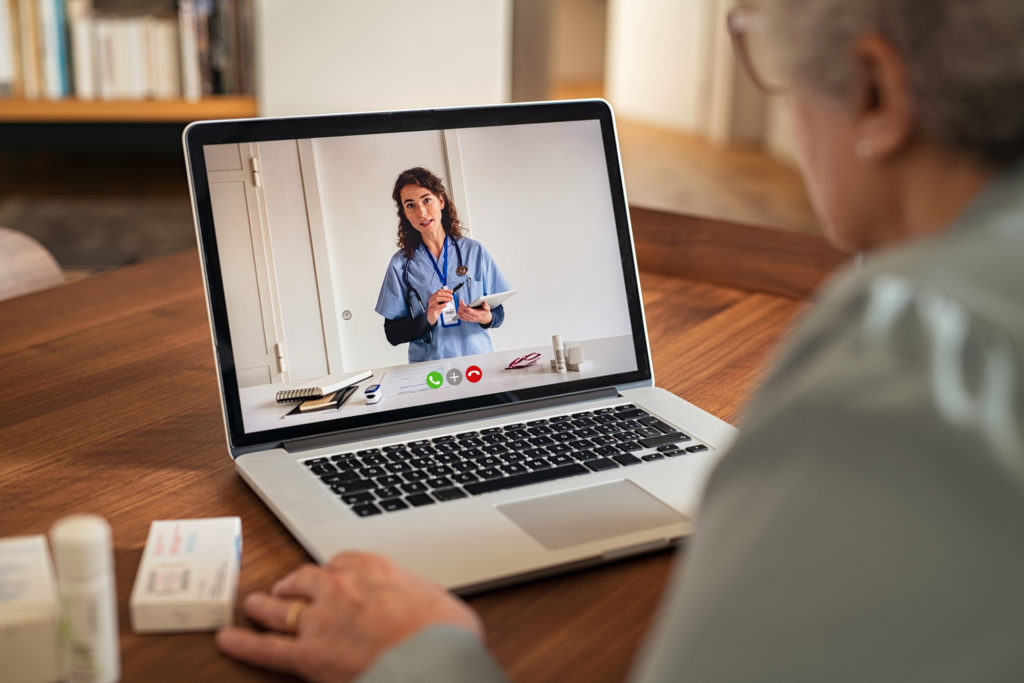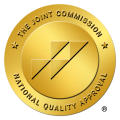Are Telehealth Services the Best Options for Addiction Treatment?
Discover the pros and cons of telehealth services and how they aid in addiction treatment.
What are Telehealth Services?
Telehealth services have become increasingly popular in the last few years, but many people may not know exactly what telehealth entails. According to The Health Resources Service Administration, telehealth is defined as using electronic information and communication technologies for long-distance health care, public health, health administration, and patient and professional health-related education.1
Some of the different types of telehealth technologies include:
- Videoconferencing
- Telephone calls
- Streaming media
- Virtual chat options
What is Remote Patient Monitoring?
Remote patient monitoring is a type of telehealth that allows patients to be treated for medical conditions outside of a traditional doctor’s office or medical setting. It refers to the specific technologies used to facilitate interaction between remote patients and clinicians.2 Remote patient monitoring is ideal for patients undergoing addiction treatment and mental health disorders. Telehealth and telemedicine interventions allow for patient treatment in crises situations, possibly during times in which traditional treatment settings would be closed, unavailable, or unsafe to visit.
These devices can monitor health in various ways, such as by monitoring heart rate, blood pressure, blood glucose levels, and chronic diseases. Other monitoring devices can track signs of stress and anxiety.3
Some examples of remote patient monitoring devices include wearable, technological devices that track patients’ physical data as well as tablet-like devices where patients can track data to be sent to clinicians.
Telehealth Services During COVID 19
The COVID-19 pandemic led to many changes and adaptations in our society. Many people avoided and may still avoid going out in public as much as possible to minimize spreading or contracting COVID-19. Fortunately, those seeking medical treatment or advice can get help from the comfort of their homes: telehealth services effectively bridge the gap between people seeking healthcare and people wanting to stay safe during the pandemic.
These services can operate in various ways, but typically patients schedule an appointment with their healthcare professional, either online or by phone, and when the appointment time and date arrive, the doctor and patient meet online via Zoom, Skype, or an alternate video conferencing service. Some patients and clinicians may opt for a phone call. Just as one would at a usual doctor’s appointment, patients and doctors can then discuss symptoms, potential treatments, and next steps. If necessary, an in-person visit can also be arranged. This model is used in virtual psychiatry and other healthcare services.
Everyone prefers to communicate differently, and telehealth offers new options that better suit patients’ needs in a rapidly evolving world. From videoconferences to phone calls—and even to texting, as seen in some online therapy services—telehealth can be a useful approach to health care.
Telehealth and Addiction Treatment
People seeking addiction treatment may feel more comfortable with telehealth options or remote patient monitoring if they feel stigmatized for seeking assistance in person. Virtual appointments also allow patients to maintain consistent communication with their health care providers, and online appointments may be more convenient since they can take place anywhere.
Remote patient monitoring also allows for risk minimization, as patients can utilize wearable devices that pick up on health risks indicative of potential relapse, then transmit that data in real-time to healthcare professionals and the patient.4 Remote monitoring can also be useful for reminding patients of upcoming appointment times and other important information about their health. Online dashboards that patients interact with are useful for monitoring mood changes, which could help prevent harm or relapse.
Pros of Remote Patient Monitoring

There are several reasons why remote patient monitoring is a good option, especially during the COVID-19 pandemic. It is undoubtedly much safer for patients and health professionals to stay home and avoid spreading or contracting COVID-19, and telemedicine services like remote patient monitoring allow that to happen efficiently.
Not only does remote monitoring allow caregivers to be available around the clock, but it also allows patients to connect with caregivers in any location. Additionally, services that offer telehealth therapy and counseling help end the shortage of mental health professionals and allow more people to access treatment.
Remote patient monitoring is also a good option for:
- Chronically ill patients who want to avoid spending so much time at the doctor’s office
- Patients who have limited mobility
- People in rural areas who may have less access to care
- At-risk or elderly people who can be informed quickly by monitoring devices when they need critical care
Cons of Remote Patient Monitoring
Not everyone supports the idea of telehealth and remote patient monitoring. Because there is no face-to-face interaction, some wonder if problems can be adequately assessed and treated. Additionally, telehealth is not accessible for everyone; people without phones, computers, or access to the internet are unable to utilize telehealth services. It is also important to note that elderly people may be put off or confused by the idea of telehealth services, as some older people may struggle to use smartphones and newer technologies.
In some cases, remote patient monitoring devices require custom healthcare software that can be expensive or otherwise difficult to work with. Additionally, some patients may doubt the accuracy and usability of remote monitoring devices. There is also the question of reliability when it comes to wearable monitoring devices, as technology is always prone to errors.
Is Remote Patient Monitoring Effective?
Despite promising technological advances in the field, more research is needed to determine the effectiveness of remote patient monitoring. Although remote monitoring is creating a significant impact in society and the research community, there is still more to be discovered in terms of accuracy, reliability, software, and usage.5
There is no room for imprecision when it comes to health, so the current devices are not heavily relied upon at this time. However, most agree that the monitoring technologies are constantly evolving and improving and will eventually be extremely useful once the technology is perfected.




